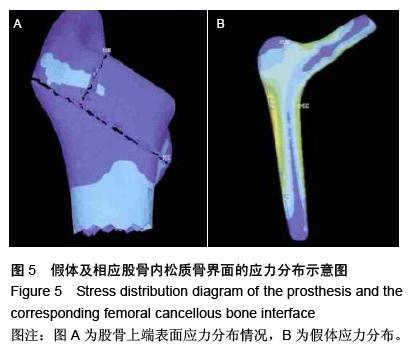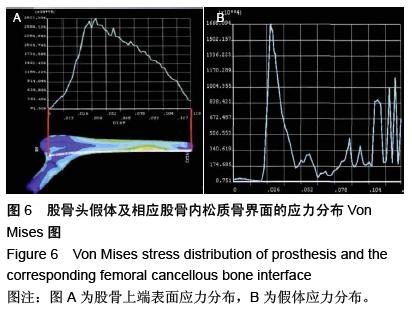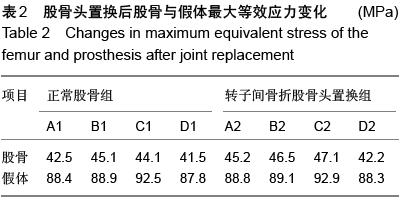| [1] 陈兴民,强晓军,王庆武,等.高龄严重骨质疏松性股骨转子间骨折的手术治疗[J].临床骨科杂志,2010,13(2): 193-195.
[2] 吴学元,马巍,任国文,等.股骨转子间骨折的手术治疗[J].实用骨科杂志,2009,15(4):277-280.
[3] 刘永光,胡云洲,杨运梁,等.人工股骨头置换治疗高龄股骨转子间不稳定骨折[J].实用骨科杂志,2010,16(2):93-95.
[4] 金伟强,郑国富,郑俊,等.髋关节置换术治疗动力髋螺钉内固定失败的股骨转子间骨折[J].中医正骨,2013,25(5): 22-24,27.
[5] 黄成国,叶君健.3种不同方式治疗老年股骨转子间骨折的病例对照试验[J].中国骨伤,2012,25(7):549-553.
[6] Waddell JP,Morton J,Schemitsch EH,et al.The role of total hip replacement in intertrochanteric fractures of the femur. Clin Orthop Relat Res. 2004;(429):49-53.
[7] Lee PC,Hsieh PH,Chou YC et al.Dynamic hip screws for unstable intertrochanteric fractures in elderly patients- encouraging results with a cement augmentation technique. J Trauma. 2010;68(4): 954-964.
[8] 佘远时,陈广祥,陈广东,等.可灌注骨水泥动力髋螺钉内固定修复骨质疏松股骨转子间骨折的优势[J].中国组织工程研究,2014,18(26):4158-4162.
[9] 徐中和,杨运发,温世锋,等.新型股骨转子间骨折内固定器(记忆合金钉板)的生物力学评价[J].中国临床解剖学杂志, 2006,24(4):444-446.
[10] 刘明轩,曹成福,张启宽,等.长柄人工髋关节置换治疗高龄股骨转子间骨折的实验及临床研究[J].骨与关节损伤杂志,2003,18(7):444-446.
[11] Sidhu AS,Singh AP,Singh AP, et al.Total hip replacement as primary treatment of unstable intertrochanteric fractures in elderly patients. Int Orthop. 2010;34(6):789-792.
[12] Suzuki K,Kawachi S,Matsubara M,et al.Cementless total hip replacement after previous intertrochanteric valgus osteotomy for advanced osteoarthritis. J Bone Joint Surg. 2007;89(9):1155-1157.
[13] 袁高翔,王蕾,张伟滨,等.动力髋螺钉与股骨近端防旋髓内钉治疗骨质疏松性股骨转子间骨折的有限元比较研究[J].中华创伤骨科杂志,2012,14(10):876-882.
[14] 高伟强,王光林,陈经勇,等.PFNA治疗骨质疏松性股骨转子间骨折的疗效[J].实用骨科杂志,2012,18(1):24-26.
[15] 黎宁,彭阿钦,张国山,等.骨水泥强化动力髋固定效果的生物力学研究[J].中国临床解剖学杂志,2006,24(2): 204-206.
[16] Faldini C,Grandi G,Romagnoli M,et al.Surgical treatment of unstable intertrochanteric fractures by bipolar hip replacement or total hip replacement in elderly osteoporotic patients. J Orthop Trauma. 2006; 7(3):117-121.
[17] 朱奕,张长青.内固定治疗骨质疏松性股骨转子间骨折生物力学特性[J].国际骨科学杂志,2010,31(2):79-82.
[18] 郭晓亮,卫小春,王小虎,等.股骨转子间骨折髓内固定物治疗的优劣评说[J].中国组织工程研究,2013,17(26): 4904-4911.
[19] Unnanuntana A,Goodman SB.Conversion total hip replacement after malunited intertrochanteric fracture: a technical note. Am J Orthop. 2008;37(10):506-509.
[20] 徐瑞生,王雪松,张怀兵,等.经髋动力螺钉侧孔注入骨水泥强化技术治疗高龄不稳定型转子间骨折[J].中华创伤杂志,2010,26(2):122-125.
[21] 刘春杰,张伟曾,褚鹏程,等.动力髋螺钉与锁定加压接骨板置入内固定治疗高龄老年股骨转子间骨折的效果比较[J].中国组织工程研究与临床康复,2011,15(17):3098-3102.
[22] 田元.股骨近端锁定加压钢板(PFLCP)固定小转子缺损型股骨转子间骨折的生物力学研究[D].河北医科大学, 2013.
[23] 徐志定,杨阿森,狄东华,等.股骨近端螺旋刀片抗旋髓内钉治疗骨质疏松性股骨转子间骨折32例临床分析[J].现代医药卫生,2012,28(14):2156-2157.
[24] Kim SY,Kim YG,Hwang JK.Cementless calcar- replacement hemiarthroplasty compared with intramedullary fixation of unstable intertrochanteric fractures.A prospective,randomized study. J Bone Joint Surg. 2005;87:2186-2192.
[25] 钱忠来,徐耀增,王现彬,等.动力髋螺钉、股骨近端防旋髓内钉和第3代Gamma钉置入内固定后生物力学性能与临床效果的比较[J].中国组织工程研究与临床康复, 2010, 14(48):8974-8979.
[26] 彭李华.人工关节置换治疗骨质疏松股骨转子间不稳定骨折的生物力学研究[D].重庆医科大学,2010.
[27] Tong PJ, Qu HB, He BJ. Artificial femoral head replacement compared with dynamic hip screw (DHS) internal fixation of aged patients with intertrochanteric fractures-a metaphase,prospective,randomized study. J Bone Joint Surg. 2010;92(supp 1):141-148.
[28] 冯卫.三种股骨近端髓内固定系统(PFNA、PFNA-Ⅱ、InterTan)与中国人股骨近端形态学匹配性研究及其固定股骨转子间骨折的有限元分析[D].南方医科大学,2012.
[29] 陈一南.经皮加压钢板(PCCP)治疗股骨转子间骨折的生物力学及临床疗效对比研究[D].苏州大学,2012.
[30] Zhang Q, Yang H, Wei YG, et al. Selection of Destination Ports of Inland-Port-Transferring RHCTS Based on Sea-Rail Combined Container Transportation[C].//Innovation and sustainability of modern railway: Third international symposium on Innovation and sustainability of modern railway (ISMR 2012), September 20-21, 2012, Nanchang, China, 2012:675-680.
[31] Merle C, Streit MR, Innmann M, et al. Long-term results of cementless femoral reconstruction following intertrochanteric osteotomy. Int Orthop. 2012;36(6): 1123-1128.
[32] 王培波,万兆玉,张若申,等.骨水泥型加长柄人工股骨头置换治疗合并股骨颈骨折畸形愈合的高龄不稳定型股骨转子间骨折[J].中华临床医师杂志(电子版),2014,8(20): 3739-3741.
[33] 张绍伟,彭李华,赵光荣,等.人工股骨头置换治疗骨质疏松股骨转子间不稳定骨折的有限元应力分析[J].中国组织工程研究与临床康复,2011,15(35):6496-6499.
[34] Haverkamp D,Marti RK.Intertrochanteric osteotomy combined with acetabular shelfplasty in young patients with severe deformity of the femoral head and secondary osteoarthritis. A long-term follow-up study. J Bone Joint Surg. 2005;87(1):25-31.
[35] 黄异飞,潘静,熊鹰,等.解剖型髋动力带锁钢板治疗股骨转子间骨折的疗效评价[J].中华创伤杂志,2009,25(1): 61-65.
[36] Kim SY,Kim YG,Hwang JK,et al. Cementless calcar-replacement hemiarthroplasty compared with intramedullary fixation of unstable intertrochanteric fractures. A prospective, randomized study. J Bone Joint Surg. 2005;87(10):2186-2192.
[37] Kim SY, Kim YG, Hwang JK. Cementless calcar-replacement hemiarthroplasty compared with intramedullary fixation of unstable intertrochanteric fractures. J Bone Joint Surg. 2005;87(10):2186-2192.
[38] Greenspan SL,Beck TJ,Resnick NM, et al. Effect of hormone replacement, alendronate, or combination therapy on hip structural geometry: a 3-year, double-blind, placebo-controlled clinical trial. J Bone Miner Res. 2005;20(9):1525-1532.
[39] 辜兆昆.骨水泥及MIIG强化不稳定型骨质疏松性转子间骨折的生物力学及临床研究[D].温州医学院,2009.
[40] 苏航.PFNA与动力髋螺钉加防旋钉固定EvansⅠc型老龄股骨转子间骨折的生物力学研究[D].河北医科大学, 2014. |
.jpg)



.jpg)
.jpg)
.jpg)
.jpg)
.jpg)